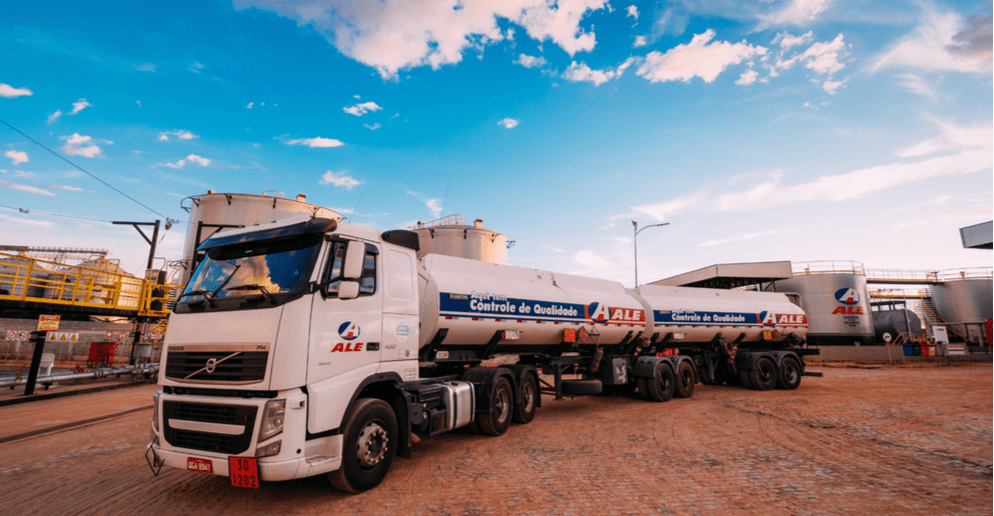
Moving Forward: The Critical Need to Support Truck Drivers
The following article first appeared in Global Trade Magazine on November 19, 2021.
“Disruption” may have been 2020’s word of the year. Both the coronavirus and the economy impacted lives, leaving no industry untouched. When the nation’s GDP hit bottom in Q2 2020, it essentially wiped out any economic gains generated over the previous five years.
While the trucking industry was affected by logistics and supply chain issues and personnel shortages last year, many analysts have predicted a strong recovery. Since mid-year last year, freight demand has continued to regain its momentum. Trucking companies still face several challenges, however, the greatest of which is its long-standing struggle to recruit, train, and retain enough professional drivers to meet demand.
The economy’s recovering — but driver shortages remain
According to the latest ATA survey on driver turnover, rates:
-Fell to 87% in Q1 2021 from 90% in 2020 at large for-hire truckload carriers ($30M+ annual revenue).
-Increased from 69% to 72% at small truckload carriers.
-Increased to 18% from 13% in the less-than-truckload (LTL) sector.
American Transportation Association (ATA) chief economist Bob Costello said, “While the driver shortage temporarily eased slightly in 2020 during the depths of the pandemic, continued tightness in the driver market remains an operational challenge for motor carriers and they should expect it to continue through 2021 and beyond.”
Even though the market is in an upturn, ATA’s most recent survey found carriers reluctant to grow their fleets. Fleet sizes have decreased 6% for large carriers, 4.9% for small carriers, and 0.9% for LTL.
In the American Transportation Research Institute (ATRI)’s Critical Issues in the Trucking Industry 2020 report, respondents recommended several strategies to help strengthen the trucking and fleet sector. One strategy includes repealing or reforming ineffective, burdensome regulations negatively impacting the trucking industry. For example, most in the industry have favored adaptations of the Hours-of-Service (HOS) rule.
In 2020, the top HOS strategist advocated for additional flexibility in the sleeper berth provision, allowing a 7-3 split of hours. The U.S. Department of Transportation (DOT) has continued exploring whether to modify HOS rules for highly automated trucks, while the Federal Motor Carrier Safety Administration (FMCSA) is conducting research to “increase understanding of the human factors and address specific areas such as driver readiness.”
DRIVE-Safe Act
This bipartisan legislation could help to address the looming driver deficit, which is projected to reach 160,000 or more by 2028. Continued growth in freight demand combined with anticipated retirements could result in the industry needing to hire 1.1 million drivers over the next 10 years — or almost 110,000 drivers each year.
The DRIVE-Safe Act introduces a rigorous two-step apprenticeship program. It would allow younger drivers (between ages 18 and 20) to apply and train to drive trucks. Candidates complete at least 400 additional training hours, and an experienced driver would accompany apprentices on the road. These drivers-in-training would be required to drive trucks equipped with the latest transportation management software and safety technology like:
-Active braking collision mitigation systems.
-Forward-facing event recording cameras.
-Speed limiters set at 65 MPH or less.
-Automatic or automatic manual transmissions.
Meeting demand
The trucking industry continues working to meet demand. 2020 saw a 36% increase from 2019 in the number of entities (almost 58,000) to which FMCSA granted carrier authority. But the pandemic has lengthened the time needed to train and license new drivers. An additional 54,000 drivers became ineligible once the new FMCSA Drug and Alcohol Clearinghouse launched last year.
One solution to attracting and retaining more drivers includes increasing pay, which has increased dramatically recently. Fleets of all sizes now offer rolling pay increases and even signing bonuses of $10,000 or more. Ironically, pay increases may be contributing to the driver shortage, because some drivers earning more have chosen to drive fewer hours.
While long-haul trucking jobs have high turnover rates — a metric many point to as the reason for the driver shortage — this trend wasn’t caused by high employee dissatisfaction but rather the drivers themselves bouncing between companies.
Attracting (and keeping) drivers
Trucking companies and fleets have turned to a variety of strategies to combat the driver shortage, including increased pay and sign-on bonuses. But it isn’t just higher salaries. Drivers want more control over their workdays and environments. One tactic to help drivers achieve the balance they desire? Workflow software and route optimization.
Technology adoption has driven efficiency gains within the trucking industry as more trucking companies have embraced digital transformation. It isn’t just shifting office staff from in-person to remote work or using video conferencing to communicate. Fleets use data analytics to improve utilization. Contactless payment systems and electronic bills of lading have reduced touchpoints and friction.
Trucking software helps fleets more efficiently track drivers, manage dispatch records, monitor interstate fuel tax agreement (IFTA) reports, optimize driver routes, pay invoices, save fuel costs, track vehicle maintenance records and more.
Fleet management platforms also help drivers work smarter, not harder. The cloud-based software and accessible data allow fleet managers to analyze information for insights to optimize driver workflow. Mobile ELD and workflow solutions empower drivers to more effectively manage work processes and routes, setting them up for success by taking the guesswork out of compliance and reducing frustration, uncertainty and inaccuracy.
Truck drivers are essential workers and critical for sustaining a functioning economy. The pandemic highlighted not just their importance, but the importance of the transportation and supply chain industries, too. As the pandemic ebbs, the world rebalances and the economy continues its recovery, fleets and trucking companies will continue to make their deliveries and transport goods from coast to coast.
Implementing the tools of digital transformation — like driver workflows and other fleet management software — will prove to be another useful tactic for attracting and retaining drivers, ensuring their safety, and empowering drivers to simplify their daily workload and operate more productively, while still achieving high-performance standards.
